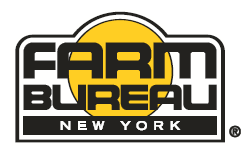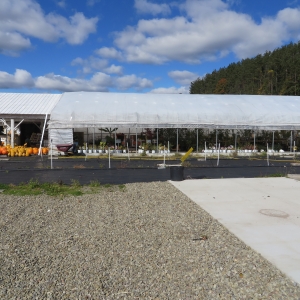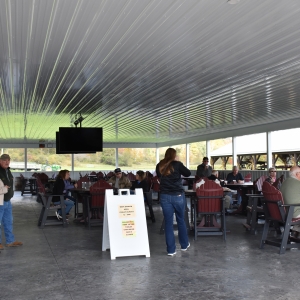Other Ag News: Path to the Farm Bill: Expanding Access to Credit
Editor’s Note: This post is the sixth post in a multi-part series exploring some of the key sustainable agriculture and food systems challenges that the farm bill can address. Through a series of posts comparing the House and Senate Agriculture Committees’ proposals, we provide an assessment of how each chamber’s bill would address a given challenge, and our recommended path forward. This post examines access to credit for farmers.
Farming is one of the hardest careers to pursue, in-part due to high startup costs. Access to credit allows farmers to purchase the supplies they need and to get crops in the ground before the fruits of that labor are available. Improvements to Title V of the farm bill are key to secure much-needed capital for farmers, not all of whom are served equally. This post compares the proposals to expand access to capital which are included in the House and Senate proposals for the next farm bill.
BackgroundNew and beginning, socially disadvantaged, and small to mid-sized farmers with limited assets face particular challenges that prevent them from accessing credit from lending institutions, including commercial lenders or even the United States Department of Agriculture (USDA), which acts as a “lender of last resort.” These farmers cannot leverage multi-million-dollar levels of farm debt, nor do they generally need to take on that much debt. It is therefore critically important that available credit options are scaled to appropriately accommodate farmers at multiple points in their careers and to address the needs of a diverse range of operations, practices, products, and markets.
Unfortunately, loan applicants with the greatest on-farm resilience and the best environmental outcomes are least likely to be approved or, if approved, to have the most expensive and difficult loan terms. Large and established operations tend to have higher profit margins and to be highly favored by loan officers, and the standard annual repayment terms are best-suited for this kind of business. Further, capital access is often contingent upon enrollment in a crop insurance or Noninsured Crop Disaster Assistance Program (NAP) plan to use as securitization; while this is not a common issue for large farms, few small, beginning, and diversified farms are able to access these programs, as explored in a recent blog post.
Discrimination has been an especially potent weapon to prevent Black, Latine, Indigenous, and farmers from other marginalized communities from accessing credit from USDA and commercial banks. Primary discrimination charges brought against the USDA in class action lawsuits such as Pigford v. Glickman focused on the administration of USDA credit programs, including both denial and predatory administration of loans to farmers of color. That legacy is ongoing. Just last month, USDA announced that 26,000 farmers who experienced discrimination received payments authorized under Section 22007 of the Inflation Reduction Act.
Senate ProposalChairwoman of the Senate Committee on Agriculture, Nutrition, and Forestry, Debbie Stabenow’s (D-MI) proposal, the Rural Prosperity and Food Security Act, offers several provisions that would help address some barriers that exist for farmers to access capital to begin and grow their operations.
To streamline access to farm ownership loans, the Rural Prosperity and Food Security Act would reduce the requirement for three years of farming experience to one year. The bill also expands the loan limits for individual direct and guaranteed farm ownership loans, up from $600,000 to $850,000 and $2.2 to $3 million respectively.
Limits to direct and guaranteed operating loans would be raised as well, from $400,000 to $750,000 and $2.2 to $2.6 million respectively. The maximum loan amount a farmer may receive from a microloan would be increased, too, from $50,000 to $100,000. Notably, these increases would be coupled with a proposal to expand the total annual funding authorization (unspecified) for Congress to allocate to USDA to make and guarantee these loans.
Loan ProgramCurrent LimitProposed Limit (Senate)% IncreaseDirect Operating Loan$400,000$750,00087.5%Guaranteed Operating Loan*$2.2 million$2.6 million18% Direct Farm Ownership Loan$600,000$850,00042%Guaranteed Farm Ownership Loan*$2.2 million$3 million 36%Microloan $50,000$100,000 100%*Guaranteed farm loans adjusted annually for inflation.The National Sustainable Agriculture (NSAC) is concerned that a significantly higher guaranteed operating loan limit and authorization, without guardrails, would further concentrate resources in the hands of Concentrated Animal Feeding Operations (CAFOs), which are known beneficiaries of USDA guaranteed loans.
Several additional provisions of the Senate bill are specifically designed to help distressed borrowers or those with limited financial stability. These include authorization for USDA to refinance distressed guaranteed loans into direct loans as well as a provision to restore eligibility for loans to farmers who previously benefited from loan assistance. It also removes the arbitrary requirement that USDA borrowers must “graduate” to borrow from commercial banks after seven years of receiving loans from the Farm Service Agency (FSA), regardless of a farmers’ ability to successfully find a loan elsewhere. These ideas were introduced to the ongoing farm bill debate via the Fair Credit for Farmers Act (H.R.5296, S.2688).
House BillWhile the House bill, the Farm, Food, and National Security Act of 2024, contains several provisions which would help farmers access credit, it raises more concerns than the Senate proposal about exacerbating inequitable access to capital and obscuring the distribution of those resources.
Notably, to support farmers trying to purchase land, the bill would establish a pilot program for farmers to receive pre-approval for farm ownership loans. Like the Senate bill, it reduces the farming experience required to apply for an ownership loan – although just from three years to two, with conditions where such loans may be made to farmers with only one year of experience.
The bill also authorizes USDA to refinance guaranteed loans into direct loans, but only after the borrower is in default and the lender has initiated liquidation or foreclosure action. These qualifiers – added quietly as part of the Manager’s Amendment during the House Agriculture Committee’s markup – will push farmers past the brink before relief can be extended, a less generous provision compared to the greater flexibility afforded to FSA in the Senate version.
The Farm, Food, and National Security Act also includes a small but important reform to the National Appeals Division (NAD), or the appeals process for farmers that have been denied loans. Currently, an individual farmer who instigates the appeals process bears the burden to prove that USDA wrongfully denied their application. This proposal would instead shift that burden to USDA, which must defend the grounds for its denial. It’s not as sweeping as the provisions to level the appeals process included in the aforementioned Fair Credit for Farmers Act, but it’s a step in the right direction.
Like the Senate proposal, the House bill expands loan limits across the board. Limits for direct operating and farm ownership loans would rise from $400,000 to $750,000 and $600,000 to $850,000, respectively, mirroring the numbers proposed in the Senate. Guaranteed farm operating and ownership loans would increase from $2.2 million to $3 million and $2.2 million to $3.5 million, a considerably higher jump than the Senate proposal which poses an elevated risk concerning inequitable access to capital.
Loan ProgramCurrent LimitProposed Limit (House)% IncreaseDirect Operating Loan$400,000$750,00087.5%Guaranteed Operating Loan* $2.2 million$3 million 36%Direct Farm Ownership Loan$600,000$850,00042%Guaranteed Farm Ownership Loan*$2.2 million$3.5 million 59%Microloan $50,000$100,000 100%*Guaranteed farm loans adjusted annually for inflation.Unlike the Senate proposal, the Farm, Food, and National Security Act would not authorize higher overall funding for USDA loans. Higher limits to individual loans without additional funding authorization or corresponding guardrails all but ensures that bigger loans would be made to fewer farms.
Finally, the House bill includes a troubling proposal to exempt the Farm Credit System – a government-sponsored enterprise and the single biggest agricultural lending institution, responsible for 43 percent of farm debt – from the Consumer Financial Protection Bureau (CFPB)’s Rule 1071. The rule requires that all business lenders, including agricultural lenders, report the demographic information of borrowers to CFPB, to facilitate transparency toward equitable lending to women-owned, minority-owned, and small businesses.
The Final PathBoth the House and the Senate present a fairly modest approach to farm loan programs in the upcoming farm bill, opting instead for larger investments elsewhere. While NSAC strongly supports investing in a stronger and more equitable farm safety net, improving farmers’ ability to access capital up-front is equally important to help alleviate hardship down-the-line. In a final bill, NSAC hopes to see positive elements adopted from both proposals which remove barriers and burdens currently placed upon small, beginning, and diversified farmers.
Before the ink is dry, NSAC also recommends additional ideas be considered to secure the investments to expand capital and land access demanded by farmers, especially young and beginning farmers.
Notably, both chambers miss the opportunity to permanently authorize the popular Land, Capital, and Market Access Program, which was implemented by USDA with $300 million from the Inflation Reduction Act. Demand for project funding reportedly totaled $2.5 billion, demonstrating significant interest that the next farm bill should honor. The bipartisan Land Access, Security, and Opportunities Act (H.R.3955, S.2340) would allocate a comparatively modest $100 million annually to continue investing in this model, which funds community-led projects that expand access to land and capital.
In addition, NSAC recommends the final farm bill incorporate the Capital for Beginning Farmers and Ranchers Act (H.R.8598, S.4441). This bill directs FSA to develop a multi-year operating loan pilot for beginning farmers, with flexible repayment terms between three to 10 years and a loan amount up to $100,000, to finance initial assets and critical start-up needs. Together with reduced collateral and interest requirements, the bill creates a lending option that helps alleviate challenges presented by the current annual loan repayment cycle for beginning farms to accumulate working capital in those pivotal first years.
Finally, as referenced above, NSAC advocates for a farm bill which more fully incorporates the Fair Credit for Farmers Act. The bill is comprehensively designed to improve access and accountability in the FSA loan application and appeals process, and would extend authorizations for FSA to continue building on improvements announced in its recent Final Rule: Enhancing Access and Delivery for Farm Loans.
Ultimately, the latest Senate and House proposals each contain overlapping and complementary proposals to improve access to credit and land for farmers. NSAC hopes to see all provisions to streamline access to ownership loans for new farmers, support distressed borrowers, and reform loan eligibility and appeals process maintained in the eventual farm bill, in addition to the late inclusion of the above priorities.
On loan limits, NSAC is more closely aligned with the Senate’s more balanced proposal. While NSAC is concerned that higher guaranteed loan limits without guardrails in both bills could exacerbate inequitable access to capital, that risk is undeniably higher in the House mark – with higher individual limits and no additional total funding authorization for FSA to make and guarantee those bigger loans.
The post Path to the Farm Bill: Expanding Access to Credit appeared first on National Sustainable Agriculture Coalition.
Signup for the Ag Newsletter
Get the freshest farm news, events and updates from in and around Cattaraugus County, NY at least once a month! Go signup!
Other ways to stay connected:
Get Involved in Farming
Resources for Starting a Farm in Cattaraugus County
Profile of Cattaraugus County soils
Agriculture Career Exploration
Questions about farming? Find out Who to Call











